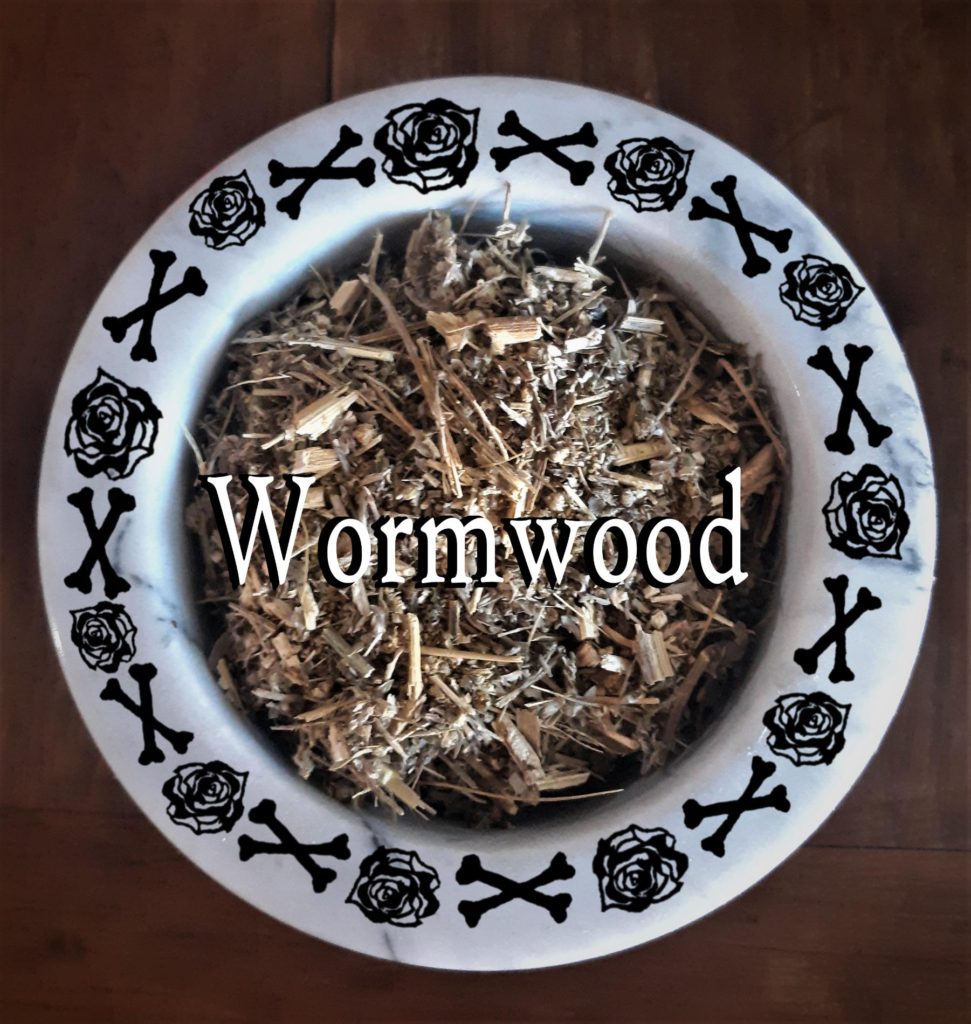
Probably one of the witchy-ist herbs in green magic, wormwood is a powerful plant to work with.
Long utilized in shamanic journeying, wormwood was burned to open doors to the spirit world.
It is both protective and toxic, displaying the energetic spectrums of Mars, the ruling planet of wormwood.
This Th-HERBS-day, we honor Wormwood (Artemisia absinthium).
Wormwood is a member of the daisy (Compositae/Asteraceae) family and is famously used in producing the alcoholic drink absinthe.
Aggressive, enlightening, and potent, wormwood is not an herb to be taken lightly.
According to Christopher Penczak’s, The Plant Spirit Familiar, the spirit of wormwood is fiery and can ward off unwanted entities.
This herb is admirable when used for protection and summoning work, but use caution when you work with it.
Wormwood can be toxic if used in excess, both physically and spiritually, it’s an herb you don’t want to underestimate.
Absinthe Bitter Spirit 70% ABV, 700ml
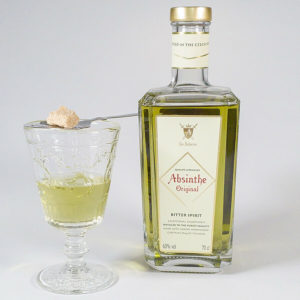
Wormwood’s Historical Medicinal Uses
The medicinal use of wormwood dates all the way back to ancient Egypt.
It was used to expel worms from the bodies of people and animals, hence is why its called wormwood.
When used as a tonic, it can help stimulate digestive secretions from the gallbladder and liver.
It was used as an antiseptic, antispasmodic, carminative, sedative, stomachic, tonic, and stimulant.
It is generally safe when brewed into a tea, as its active components have very low water-solubility.
According to Rodale’s Illustrated Encyclopedia of Herbs, wormwood tea compresses can act as an anesthetic when applied to the skin.
Wormwood can react as a convulsant poison and a narcotic when consumed in large amounts.
The essential oil of wormwood has been found to be extremely dangerous and can cause seizures, lock-jaw, and convulsions.
So be extremely careful and consult with a doctor or certified herbalist before ingesting wormwood.
Wormwood and Absinthe
Wormwood had long been associated with absinthe production.
Nicknamed “The Green Fairy” this iconic green liqueur was loved by historic artists like Van Gogh, Degas, and Monet.
Absinthe was once thought to be a dangerously addictive drink and was outlawed in the US in 1912.
The drink was notorious for causing hallucinations, euphoria, and even death.
These dramatic effects were thanks to a chemical compound found in wormwood called thujone.
Scientific studies revealed that when thujone was consumed in large amounts, it could cause profound mental and physical changes.
In 2007, absinthe was made legal again in the US after the amount of thujone during production could be controlled.
Today you can find the once-taboo beverage legally, but with only mere fractions of the mischievous thujone components.
ARTCANVAS The Absinthe Drinker 1875 Canvas Art Print by Edgar Degas

Spell Crafting with Wormwood and Ritual Use
When spell crafting or performing rituals with wormwood, it’s a good idea to partner its use with mugwort (Artemisia vulgaris).
They’re a powerful force when used together in psychic work and amplify each other’s properties.
Firstly, knowing the differences between wormwood and mugwort is important.
These two herbs can be confused with one another because their names are used interchangeably.
Both are in the Artemesia genus, which is a family ruled by the moon, but they’re ruled by separate planets.
Mugwort is protective and can enhance psychic ability by encouraging your third eye to open.
Wormwood is also third-eye opening, while summoning the spirits you are calling in and fighting away the unwanted ones.
You can grind both of these herbs together with sandalwood or frankincense resin with a mortar and pestle.
Sprinkle the mixture over a fire, or on a lit charcoal disc and let the smoke fill your ritual space.
Lightly breath in the aroma of the incense and ease into a meditative state.
This powerful mixture should ease spiritual connection while also protecting you from unwanted dense energies.
You may also burn this mixture to cleanse your altar tools, home, and vehicle.
If the incense is too smokey for you, simply mix them into melted beeswax and make them into candles.
Wormwood’s Energetic Properties
The energetic properties (and any other herb you intend to work with) are an extremely helpful guide to assist you in spell crafting and rituals.
When planned carefully with corresponding days, seasons, zodiacs, etc., the energy of the herb is heightened and will intensify the power behind your intention.
Here are 18 energetic properties associated with wormwood:
1. Planet: Mars
2. Zodiac Sign: Aries
3. House: 1st and 8th
4. Element: Fire
5. Gender Energy: Masculine
6. Chakra: Solar Plexus (Yellow)
7. Archangel: Cameal
8. Deity: Artemis (Greek), Thor (Norse), Diana (Roman), Laran (Etruscan)
9. Sabbat: Ostara
10. Season: Early Spring
11. Day: Tuesday
12. Body: Head, external sex organs, muscular system, face, left ear, sense of taste, and bladder
13. Rune: Fehu and Uruz
14. Numerology: 9
15. Fae: Salamander
16. Major Arcana: The Emperor, The Tower, and Death
17. Minor Arcana: Wands
18. Cartomancy: Diamonds
Choose Your Witchcraft Herbs, Eco-friendly Herbs,
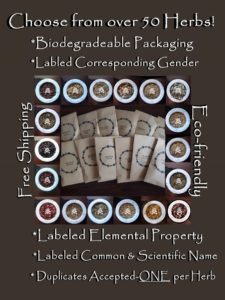
Growing Wormwood
Wormwood can look lovely as a bedding shrub and is great as a garden barrier to repel pests.
It has attractive green-gray leaves and is excellent for repelling negative energies from your property.
It’s very easy to grow because you can cultivate it in just about any type of soil.
Also, you can grow wormwood directly from the seeds and germination is easy.
The seeds can be sown in the fall season or in flats in late winter.
Just make sure to plan your garden properly, because wormwood can be toxic to other plants.
Its absinthian makeup can wash off the leaves and be absorbed in the soil.
Once the absinthian is absorbed, it can keep nearby plants from growing.
After wormwood has grown and established, maintenance will only require occasional weeding and adding compost to the soil.
Garden Tools Set 10 Piece Heavy Duty Gardening Kit Gardening Tools with Gloves

Harvesting and Storing Wormwood
Harvesting wormwood is best done in its second or third year in July.
You will want to gather the top parts of the stalks on a dry day.
The top parts of wormwood are where you will find the most concentrated parts of its energetic properties.
Hang small bunches of the wormwood in a dark or shady room preferably at a temperature of around 70 degrees.
Drying the herb in temperatures above 70 degrees could cause its volatile oils to evaporate, leaving the herb less potent.
Once dried, you can store the herb in airtight glass or in tin containers.
Label the containers with the date you harvested the herb and keep in a cool dark place.
Happy crafting!
Electric Incense Burner with Rhinestone in Unique Shape 110V /Gift/ Décor
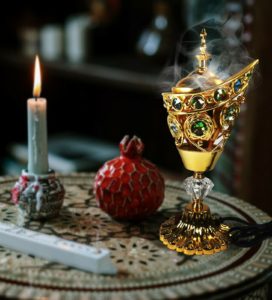
Lisa Parker Canvas Print Absinthe Black Cat
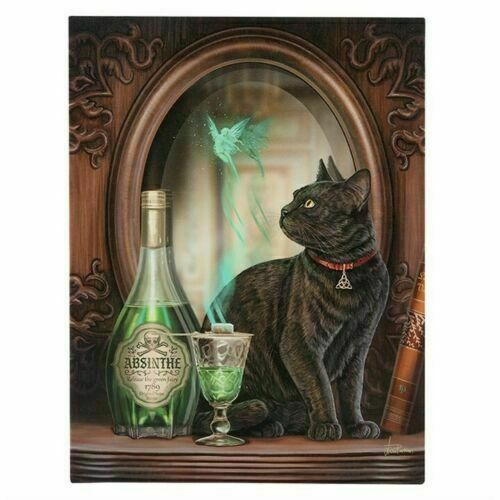
Shamanic Journeying: A Beginner’s Guide

